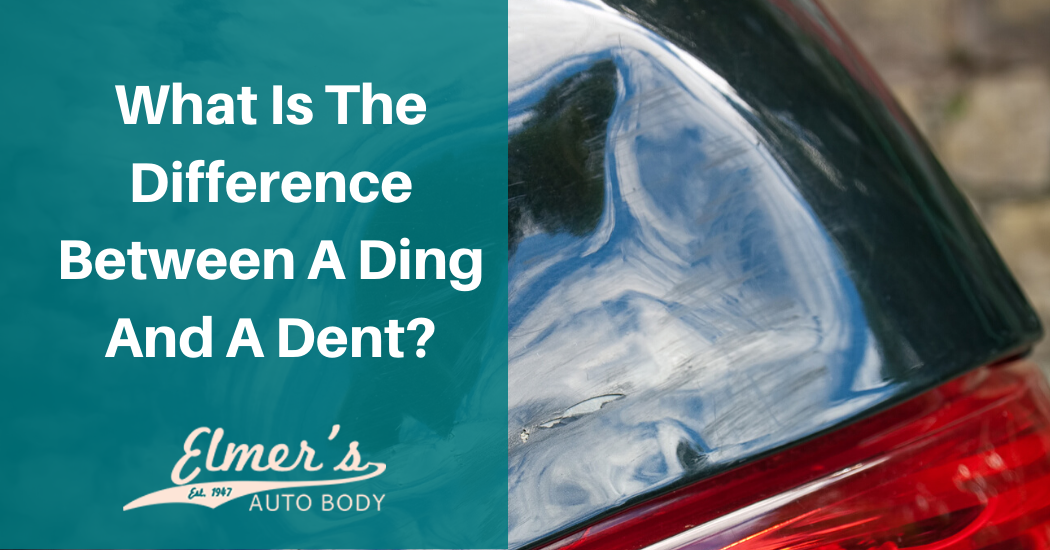There is nothing quite as exasperating as a newfound ding or a dent on a vehicle, especially if you discover it on your newer car or truck that you have babied along and kept in pristine shape since you bought it.
Parking Perils
Maybe your vehicle has never been exposed to the perils of a parking lot, driveway, parking garage or anywhere else where close contact with another vehicle is bound to happen. Unfortunately, that day will likely come along when you discover that your vehicle is vulnerable to just about any kind of ding or dent. Walking out to your vehicle and witnessing its first ding or dent is a hard thing to accept. Lo and behold you discover a ding or dent you thought would never happen. You try to recover from the shock of how the whole thing could have happened, but you pull yourself together and admit that the problem is up to you to resolve. Just how are you going to return your prized possession to its old, new self?
Difference Between a Ding and a Dent
Car body damage can go from small scratches to a state of total disrepair and those unsightly dings and dents are somewhere in between, but they still are unappealing and can be damaging to a vehicle. So what is a ding as opposed to a dent?
Ding
A ding is usually about a half inch in diameter. A ding won’t damage a vehicle’s paint or leave a bare area where rust can form. Dings usually occur in parking lots and causes are due to runaway shopping carts, rocks or opened car doors. Hail showers or storms can also cause dings. Damage from hail can be extensive and repair costs costly, but there are newer paintless repair processes that can help with ding removal.
Dent
A dent is larger (over half an inch wide) than a ding and covers a more extensive area of a vehicle. Paint damage occurs with a dent as well as underlying damage that can result in rust formation on the frame. The same factors that govern a ding can also affect a dent, but a collision with another car or object is another leading cause of dents. Even a slight impact with another bumper can create a dent that is critical enough to require repair. Dents are more difficult to repair, and damage can lie beneath an indentation in the metal of a vehicle. Rust damage is enabled because of bare metal exposure that happens when a dent is exposed to moisture and the elements. With the larger area of exposure that a dent causes, damage can involve substantial metal work as well as repainting and panel replacement.
Major Differences
The major difference between a ding and a dent has to do with size and whether the paint is damaged as well as the amount of labor and expense required to repair any damage.
Repairs
Small ding repair doesn’t appear to be a top priority with vehicle owners and oftentimes dents are treated with the same lack of urgency. The absence of concern is often linked to the fact that dings and dents are cosmetic issues rather than mechanical. Though the thought of cosmetic repairs, any damage, large or small, should be attended to, particularly if a vehicle owner is leasing a car, planning on selling it or using it as a trade-in for another vehicle. A leasing company will likely charge for any wear and tear on a leased vehicle, and car dealerships may limit trade-in value on a vehicle that has dings. So, there are financial implications when there is no follow-through on dings and dents.
Financial Loss
When ignoring dings and dents is connected to major financial loss, vehicle owners should make it a point to deal with dings and dents and a repair process.
Proper Repair Process
With the possibility of major financial loss due to ignoring ding and dent damage, it’s in the best interest of any vehicle owner to look at the repair process. Currently, the best repair procedures involve what is called paintless dent repair. This involves the use of slow pressure on the ding or dent. With this process, no damage occurs to the original paint job. This procedure is less costly than other methods used to remove dents and dings.
Now that you know the difference between a ding and a dent, you might want to take into consideration what repairing either one can do to the value of your vehicle as well as any mechanical and safety factors that may come into play with a more involved ding or dent. If you are concerned about any dings or dents on your vehicle and need some quick answers as to the repair process and the costs involved, complete the online contact form and a repair specialist will get back to you with the answers you need to determine what can be done to resolve the ding or dent issues plaguing your vehicle.

